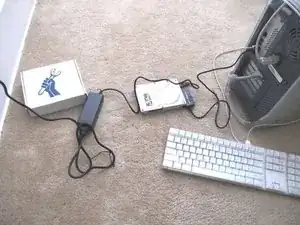
Data rescue from an old computer
These are some common tools used to work on this device. You might not need every tool for every procedure.
Since the 1940s, nearly all computers have run on the von Neumann architecture. Today's desktops, though, take up a few cubic feet or less, rather than entire rooms.
A Desktop Personal Computer is a computer which allows the user to work at a singular location, usually at a table or desk. Desktop computers do not necessarily include a built in display or keyboard, so additional peripherals may be required for function.
The first computer to actually sit completely atop a desk in 1970 was the Datapoint 2200, designed by the Computer Terminal Corporation to interface with a mainframe computer, but had the ability to function as a stand alone computer. 1977 saw the first “home” computers to be marketed towards the consumer market in the Apple II, the Commodore PET, and the TRS-80. Throughout the 1980’s and early 90’s, the design consisted largely of a horizontal oriented case, with integrated keyboards and a display which sat on top. Over the course of the 90’s, this design fell out of fashion in favor of the contemporary “tower” case design, where the components of the computer are encased in a vertically oriented case with ports on the back to connect the user’s choice of peripherals.
Nowadays, the desktop computer takes many forms, from a compact case roughly the size of an optical drive, to all-in-one machines with integrated screens and keyboards, to full-sized, liquid-cooled, powerful gaming PCs. Although they have become less popular over the years as laptops have gained mass appeal, desktops are still used and even preferred for intensive computing and high-performance gaming.
The easiest way to identify the desktop computer is to look on the rear of the unit for a tag usually located there. This tag will usually provide the manufacturer name and a model number and frequently a barcode QR code or a service number that will allow you to obtain more information about the unit. Units that have been custom built will not have this information available in this fashion.